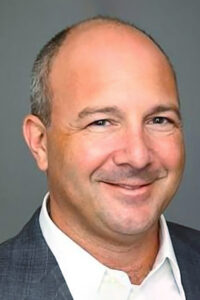
Group Vice President, End-To-End Supply Chain, Nexera
The Journal of Healthcare Contracting: What’s the most challenging or rewarding project that you’ve worked on in the last 12 to 18 months?
Jeff Ashkenase: Managing the supply chains of 10 hospital systems in the New York/New Jersey/Connecticut area during a global pandemic was both the most challenging and rewarding work in my career as a healthcare supply chain executive.
Accounting for just shy of half of the total U.S. COVID-19 cases in April 2020, New York City emerged as the epicenter of the outbreak, with our health system partners struggling to access the supplies necessary to protect frontline workers and care for patients. There wasn’t enough personal protective equipment (PPE) and no playbook to follow for this once-in-a-lifetime pandemic and the supply chain challenges it created.
Our on-site teams worked 24/7 to support frontline caregivers and patients, addressing challenges in real-time and amid this rapidly changing environment. They showed unwavering commitment to enabling access to supplies, intelligence and technology so that providers focus on patient care.
The team shared their observations and guidance during Premier’s Weekly COVID-19 call, open to members and the industry, and their regular insights have helped inform Premier’s ongoing conversations with the federal government and other key stakeholders to help guide U.S. COVID-19 response.
I am infinitely proud of our team and this work alongside our healthcare hero partners and during one of the most challenging times for our industry.
JHC: What project or initiative are you looking forward to working on?
Ashkenase: After an incredibly stressful 18 months, my focus is on my team, ensuring they have some downtime, feel supported as they deal with the long-term effects of the past 18 months and have all the resources they need be successful going forward.
COVID-19 demonstrated just how essential the supply chain is to enterprise-wide success and growth. Leaders across organizations have witnessed firsthand the agility, innovation and responsiveness of the supply chain during a crisis of this magnitude as well as what we’re capable of post pandemic and beyond.
In other words, the supply chain is no longer just a purchasing vehicle. It’s also a key component of an organizational management strategy capable of reducing costs and optimizing efficiencies and while driving strong clinical outcomes. This enhanced perspective will open up opportunities to be involved early on in the development of strategic initiatives alongside our hospital partners.
JHC: What changes brought about by the pandemic are here to stay with respect to the supply chain?
Ashkenase: The pandemic made it abundantly clear that a new approach to managing the supply chain is needed, one based on greater diversity of manufacturing and suppliers, as well as added redundancy and visibility.
We’ll see greater, dedicated sources of U.S.-based supply – and organization’s supply chain management strategies will continue to focus on diversifying production overall, both domestically and abroad, to help eliminate shortages.
Stockpiling, in some form or fashion, is also here to stay. As we learned in this pandemic, a sustained national emergency like this requires individual hospital stockpiles as well as federal supplies, and a lot of them. We’re working closely with the federal government to collaborate on Strategic National Stockpile (SNS) redesign. We need to think through surge, inventory management and distribution in a more systematic way – and with a dynamic allocation system where product is funneled to those most in need, considering where the hot spots are, as well as projected case load.
And last, but certainly not least, we’ll continue to see a more technology-enabled supply chain that can anticipate and respond to future shocks and minimize their impact, as well as automate manual processes. Advanced data analytics can help healthcare providers and organizations across sectors achieve savings, drive transparency and build resiliency for the future.
JHC: How do you generate great ideas in your organization?
Ashkenase: The best ideas come from asking questions, listening to the team and other stakeholders, and creating a safe environment for brainstorming and sharing ideas.
It’s also important for organizations to support their teams in making it easy to try new things and innovate. We shouldn’t harp on projects that may not have been as successful as we had expected – but instead focus on understanding why they weren’t successful, lessons learned and the path forward to enable success and growth.
JHC: How do you align your organization with your vision and mission?
Ashkenase: First, it’s important to mention that it’s not my vision or mission – it’s our collective vision and mission as an organization and among all of our people.
At Nexera, we find it vital that our employees understand their role in helping us improve healthcare via supply chain transformation, and that they have the skills and resources needed to serve as advocates for our members and to implement meaningful, sustainable change.
JHC: What are your current goals?
Ashkenase: One goal I have this year is to continue advancing innovation and elevation of the supply chain. It’s our passion to give providers a leg up to thrive in today’s healthcare environment – enabling them to streamline operations, ensure clinical integration within the supply chain and manage procurement costs all in one place.
Another goal I have is to continue to do everything I can to support my team and help them thrive and grow. They are an amazing, talented group of professionals – I’m really proud to work alongside them.
